Shop sim racing equipment
It’s been a huge week for both iRacing and Le Mans Ultimate. The former’s Season 1 2025 update saw the Ferrari 499P Hypercar added, the first appearance of an LMH car in the sim, while the latter saw the arrival of four LMGT3 cars, potentially transforming LMU’s long-term fortunes.
However, the introduction of the Ferrari 499P LMH in iRacing allows a direct comparison to LMU’s version of the car, and more pointedly, to how each sim implements its crucial hybrid system.
Below, I’ll discuss how this system works in the real-world World Endurance Championship, how it’s implemented in each sim and, most crucially of all, how realistic it is.
LMH rules
The Ferrari 499P operates to FIA and the Automobile Club de l’Ouest’s (ACO) LMH ruleset. This means that Ferrari can fit a motor generator unit (MGU) to the front axle of its car, allowing four-wheel-drive above certain mandated speeds (above 190 kph in dry conditions).
Hypercars have a virtual energy tank, which is defined as the allotted quantity of energy a Hypercar can use during a race stint. This consists of both hybrid power and conventional fuel, with the final output of the car calculated by a torque sensor monitored by the FIA (for more information on virtual energy and its implementation in Le Mans Ultimate, check out my guide here).
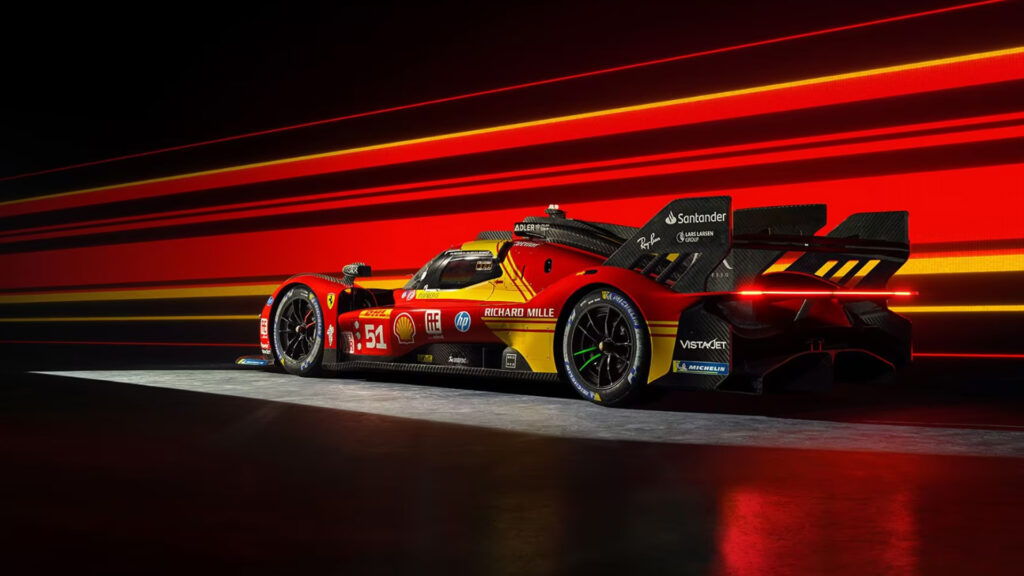
All Hypercars (LMH and LMDh) are allowed to run with a combined total of 500 kW / 671 bhp, split between electrical and internal combustion engine (ICE) power, with LMH MGUs capable of producing 200 kW / 268 bhp. LMDh cars, on the other hand, use a spec Williams Advanced Engineering-developed hybrid system which produces just 50 kW / 67 bhp, meaning an LMDh car’s virtual energy tank consists of a higher proportion of petrol than an LMH’s.
Note: the MGU doesn’t provide a boost over and above the allowed 671 bhp, it temporarily replaces power created by the ICE. Torque sensors located on the cars’ driveshafts constantly monitor the combined power output to ensure it doesn’t exceed 671 bhp.
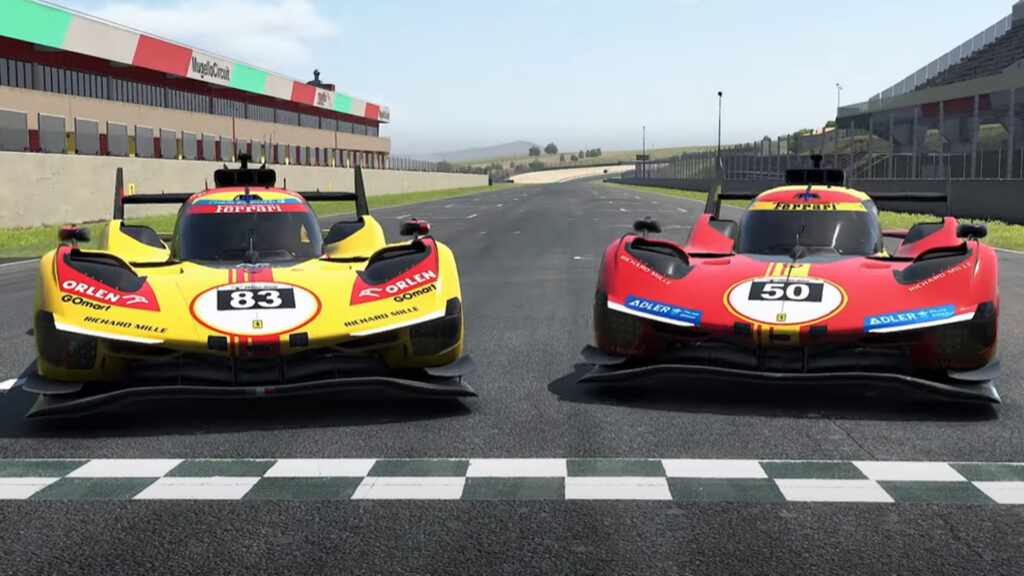
Bop
The ACO and FIA set the Balance of Performance (BoP) between all LMH and LMDh Hypercars, setting the power, weight, aero drag and amount of virtual energy allowed per car per stint, with a separate calculation required for a new ‘power gain’ system, applying to speeds above 250 kph.
So, the bottom line is that the hybrid element of a Hypercar doesn’t necessarily add performance, but does increase fuel efficiency. This brings us to…
Hybrid Theory: The Ferrari 499P in iRacing
As stated above, hybridisation in Hypercars is geared towards efficiency rather than performance. In iRacing, you can charge the 499P’s battery and deploy its charge via five ERS modes, limited to four deployment mode changes per lap (which is the exact same for the sim’s LMDh/GTP cars).
- No Deploy: hybrid is not deployed, battery’s state of charge (SOC) will increase to 100%.
- Balanced: the mode you’d use in a race situation, will aim to keep battery charge at around 50% at the start/finish line.
- Build: minimal deployment used, battery will keep charging until SOC reaches 100%.
- Attack: to be used for overtaking, will deploy aggressively until 0% SOC is hit.
- Qual: most aggressive deployment strategy, mainly for hot lapping. Will deploy until 0% SOC.
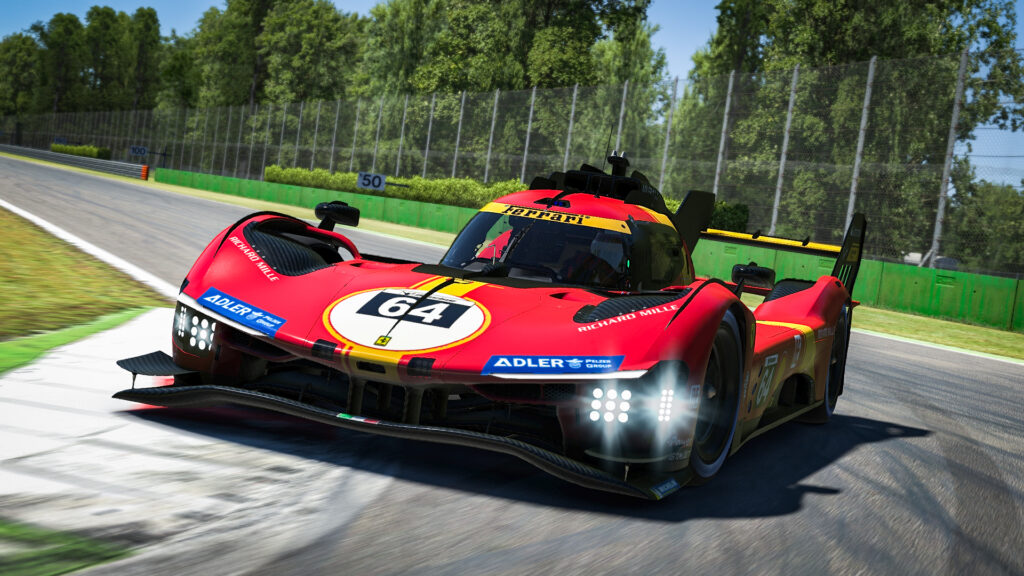
In testing at Monza, I found that the time difference between the Balanced and Qual ERS modes was around one second per lap (give or take a couple of tenths for mistakes). The Qual setting offered more performance, going against the ethos of the Hypercar rules, while the hybrid kicked in below 190 kph.
Oddly, the electrical whine that indicates the MGU operating is audible at 190 kph, so that’s accurate, at least. However, you canhear the hybrid motor working even in the No Deploy mode…
It makes the Ferrari frighteningly quick out of tight corners and provides a ton of confidence, but it isn’t realistic, essentially pointing to the car having separate hybrid and ICE components which do not complement each other as per the real-world Hypercar rules.
On the other hand, using the No Deploy mode results in iRacing switching off battery assistance completely, making your car accelerate slower. There is also no virtual energy tank in iRacing, with the Massachusetts-based business deciding the 499P would just have a fuel tank.
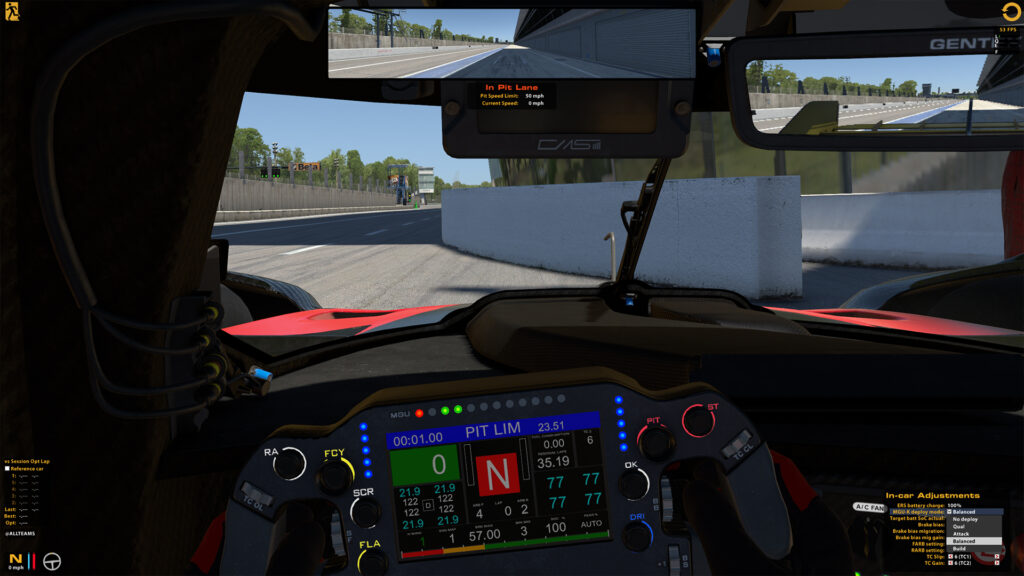
Braking away
Crucially, when the battery is fully charged in iRacing’s 499P, braking is completely unaffected. When you stamp on the middle pedal in a Hypercar (one with an MGU, that is), the MGU creates engine braking while it harvests energy. So, if the battery is full the MGU will not harvest and this will increase stopping distances.
It also sends the brake balance to the rear of the car, increasing the likelihood of the rear tyres locking. This effect is not seen in iRacing but is very much present in LMU.
Using more battery power should reduce fuel consumption in hybrid prototypes but again this is not the case in iRacing, with no discernible difference in fuel consumption between ERS modes.
IMSA balancing
To fit in with iRacing’s LMDh/GTP class, as used by IMSA in real-world racing, the 499P has to be balanced against the BMW M Hybrid V8, Cadillac V-Series.R, Porsche 963 and Acura ARX-06.
LMDh/GTP cars have their MGUs on the rear axle only, producing only 50 kW / 67 bhp, but this can be deployed as soon as the throttle is pressed, unlike LMH cars. iRacing’s Ferrari appears to follow these rules in terms of deployment, with homogenisation seemingly the path of least resistance for the firm.
It sounds like I’m having a good old moan about the 499P but I’ve thoroughly enjoyed driving it so far, lapping up all the lovely aero grip it has to offer alongside its tactile force feedback. But there’s nothing wrong with striving for more realism!
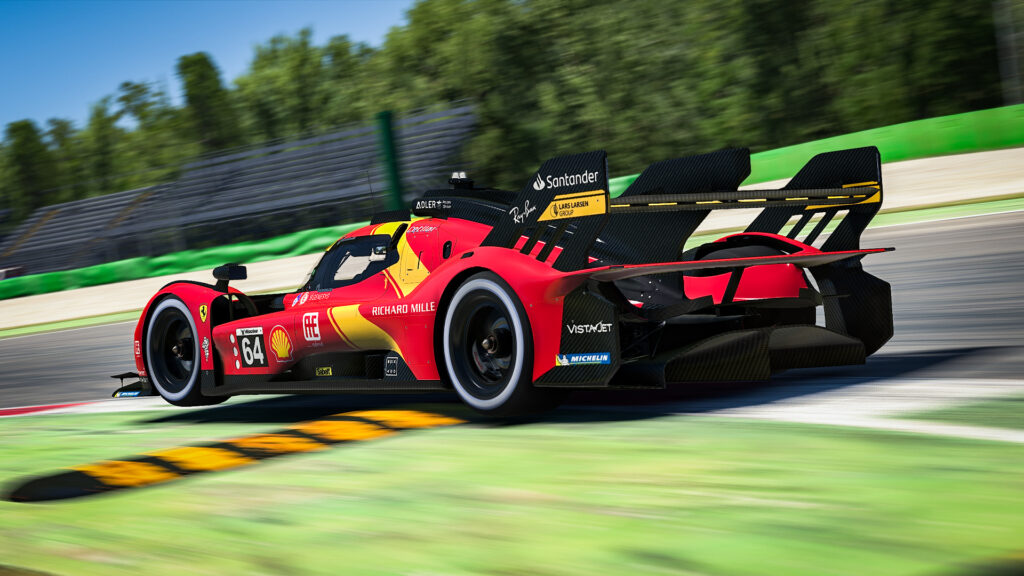
The Ferrari 499P in Le Mans Ultimate
LMU simulates LMH hybrid systems much more faithfully than iRacing. MGU assistance kicks in at 190 kph (alongside the sound of the MGU), and braking is adversely affected when the battery is fully charged.
There is much more adjustability in LMU’s hybrid mechanic, with separate controls for motor map and regeneration levels. These must be balanced during a race for optimal efficiency to ensure you extend your stints as far as possible. The key is to never let the battery hit 100% SOC.
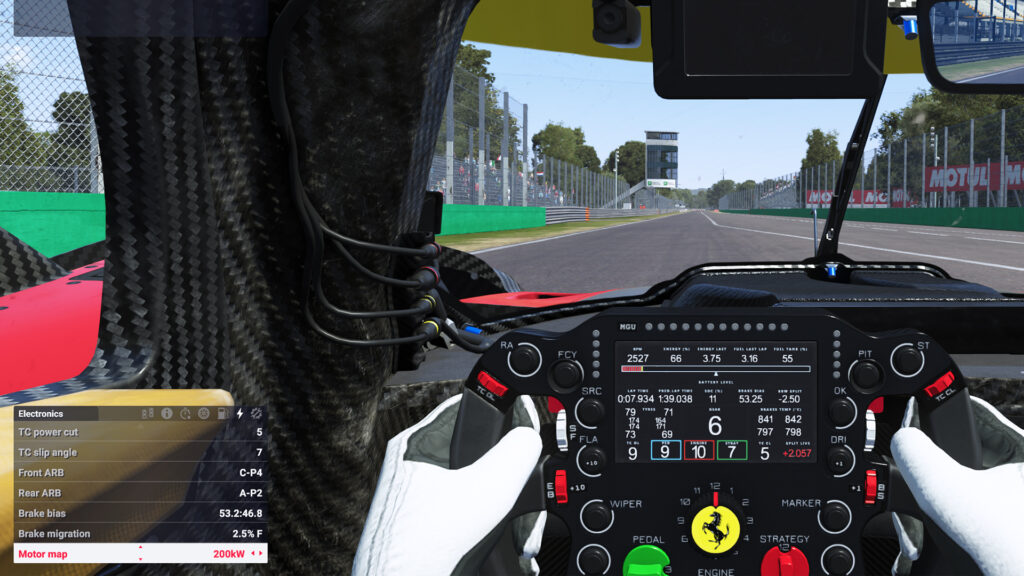
For best race performance, the regen level must be set as high as possible (200 kW), with the motor map set at a more conservative 40 or 60 kW.
In terms of Monza lap times, iRacing’s 499P feels so much faster than LMU’s. With a few laps of practice on default set-ups, I was able to go over two seconds faster in iRacing (1 min 34.8 versus 1 min 36.981). This compares to the 1 min 36.753 fastest lap from 2023’s WEC round at Monza set by the #50 Ferrari AF Corse entry.
It’s the way LMU simulates its hybrid systems that impresses most, however: using a higher motor map setting (more battery power) will reduce ICE fuel usage, unlike in iRacing. With the motor map set at 40 kW, I burned through 3.6 litres of fuel per lap, 200 kW used 3.16l per lap.
You can’t use 200 kW at Monza for very long, though…
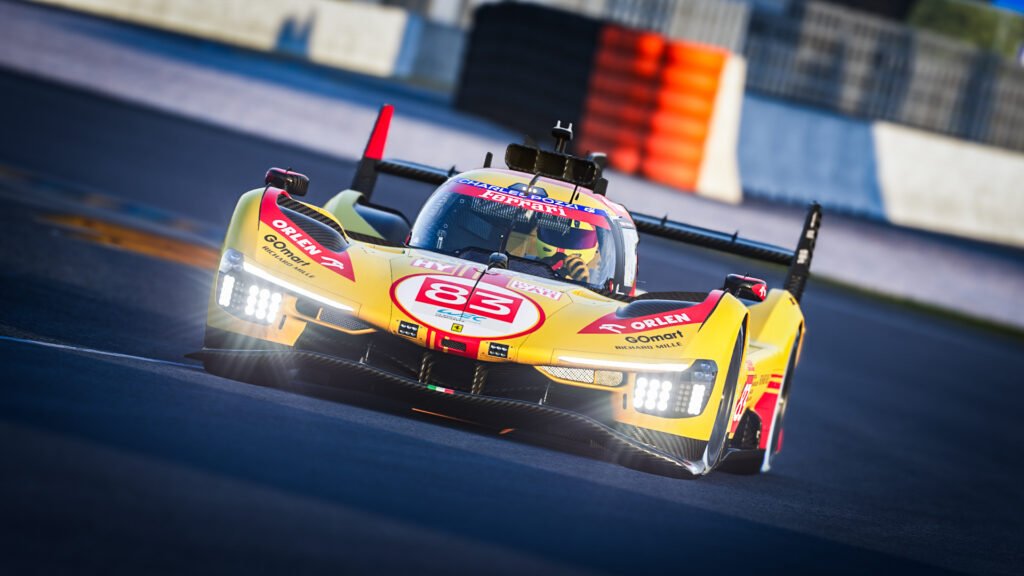
Conclusion
So, iRacing doesn’t simulate the hybrid systems on its new Ferrari 499P brilliantly, but does it really matter?
Well, if you’re having fun driving it, no (and I had a lot of fun testing it, I have to say). But for a sim that prides itself on realism, it’s surprising that all its ducks weren’t in a row ahead of the car’s release.
LMDh cars have been in the sim since the release of the BMW M Hybrid V8 way back in 2022, so it’s hard to argue that iRacing hasn’t had time to address its hybrid issues, especially with the high cost of each piece of content and a subscription fee factored in.
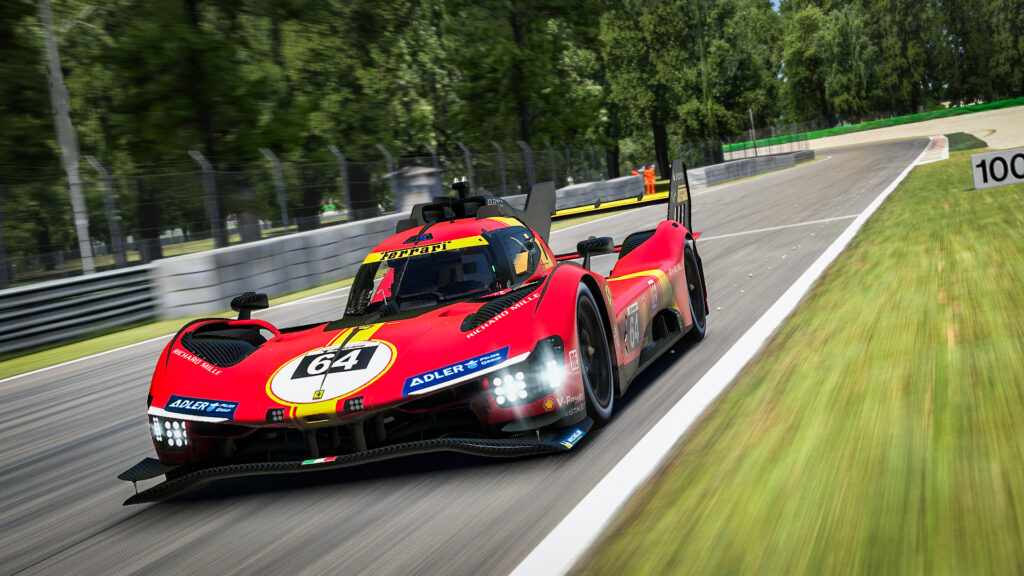
Interestingly, Automobilista 2 introduced a hybrid system in its recent v1.6 update, substituting LMU’s motor map setting for its standard ICE fuel map setting. It’s labelled incorrectly in-game but does provide similar effects, although AMS 2 currently only has LMDh Hypercars. It will be interesting to see how well Reiza refines this in future, given the apparent disparity in resources between it and iRacing.
Still, we’re sure iRacing won’t rest on its laurels, as can be witnessed by its superlative wet weather simulation, comprehensive damage model and neat track debris system.
Have you been enjoying iRacing’s Ferrari 499P, despite its hybrid deficiencies? Let us know in the comments below.
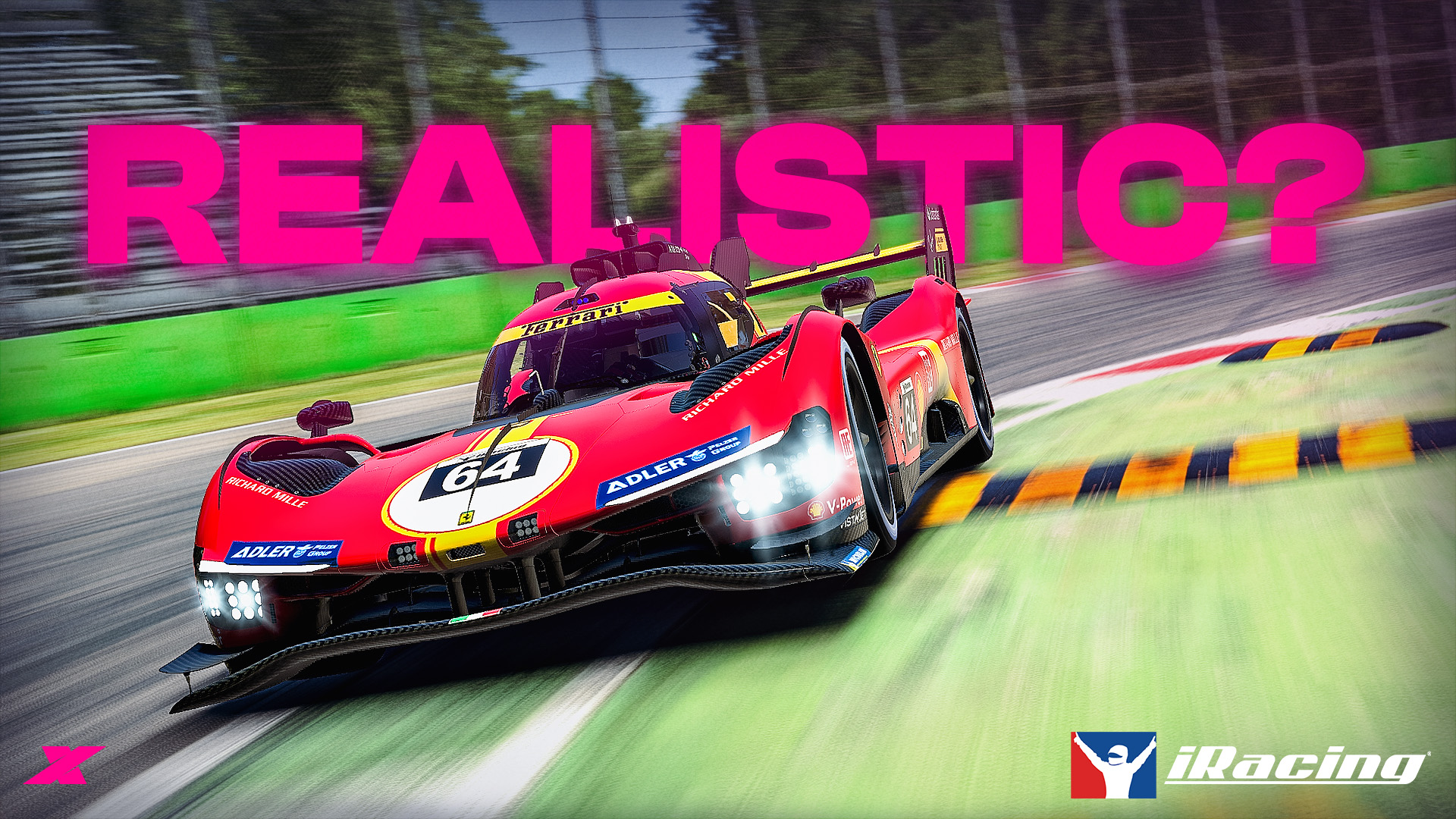




Chat with the Community
Sign Up To CommentIt's completely Free